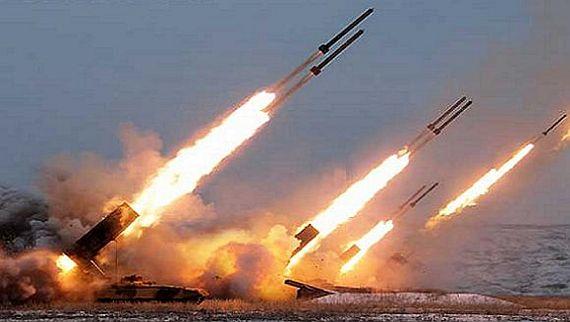A space-based series of sensors that would coordinate with missile interceptor sites in the continental US to counter ballistic missiles threats posed by countries like North Korea and Iran? This is but one of the jaw dropping newly proposed defense technologies that will be highlighted as part of a long-awaited report on the status of the country’s missile defense capabilities to be unveiled during President Trump’s visit to the Pentagon Thursday.
The president will make the visit to reveal the Missile Defense Review, which studies and assesses US missile defense capabilities and needs under in order to inform the White House’s Pentagon funding request for the upcoming fiscal year 2020 budget. Crucially, it’s expected to outline changes in America’s missile defense strategy toward Russia and China, as well as present key avenues of upcoming research, such as futuristic and experimental advanced tech systems like laser intercept capabilities and space-based detection systems.
The congressionally mandated review is the first of its kind to be undertaken since 2010, and though it was scheduled to be released in late 2017, it was finally completed in October of last year — pushed back in part due to the administration’s desire to expand the scope of the study from ballistic missile defense to all missile defense.
Likely the most provocative and headline grabbing part of the review will be space related defense. According to ABC News:
According to a senior administration official, the review looks at the development of new space-based sensors that could detect long-range missile before they are launched and calls for the study of whether lasers could be used to counter ballistic missiles that are launched by rogue states.
Statements from senior Pentagon officials previewing what to expect have indicated these new space capabilities could become the next big layer of missile defense against Iran and North Korea. “Space is key to the next step of missile defense,” said one official to ABC.
Potential plans and areas of further research will include “early warning systems” in space that could track missiles as they are being prepared for launch, perhaps ever more crucial given current reports of Russian and Chinese rapid development of hypersonic threats.
The Missile Defense Review is also expected to explore “a space-based interceptor that could fire rockets into space, directed at an incoming missile,” according to senior officials. This will also include study of the use of what an official described as “directed energy” against incoming missiles, possibly through laser technology. On these and other technologies that sound straight out of Star Trek, the official said “we think is worth looking into”.
Specifically on the North Korea nuclear and long-range ballistic missile threat, the following bizarre and futuristic sounding weapon has been described as under consideration as an avenue of research:
ABC News has learned that one concept being explored for countering the North Korean missile threat in the future is using a new solid state powered laser on a high-altitude drone. The long-range laser would be able to destroy a North Korean missile while in the initial boost phase of its launch.
“This is really a comprehensive look at our missile defense capabilities and programs and posture,” a senior administration official said of the report’s release. “Both what we have today, what we’d like to make improvements to and then what are the next generation programs we’d like to invest in to get ahead and stay ahead of the threat.”
Both the private defense technology industry as well as foreign nations and their defense sectors are expected to pay close attention to what’s unveiled later on Thursday, especially competitors in this arena already touting their own cutting edge weaponry such as Beijing and Moscow.
via RSS http://bit.ly/2AORAVs Tyler Durden

